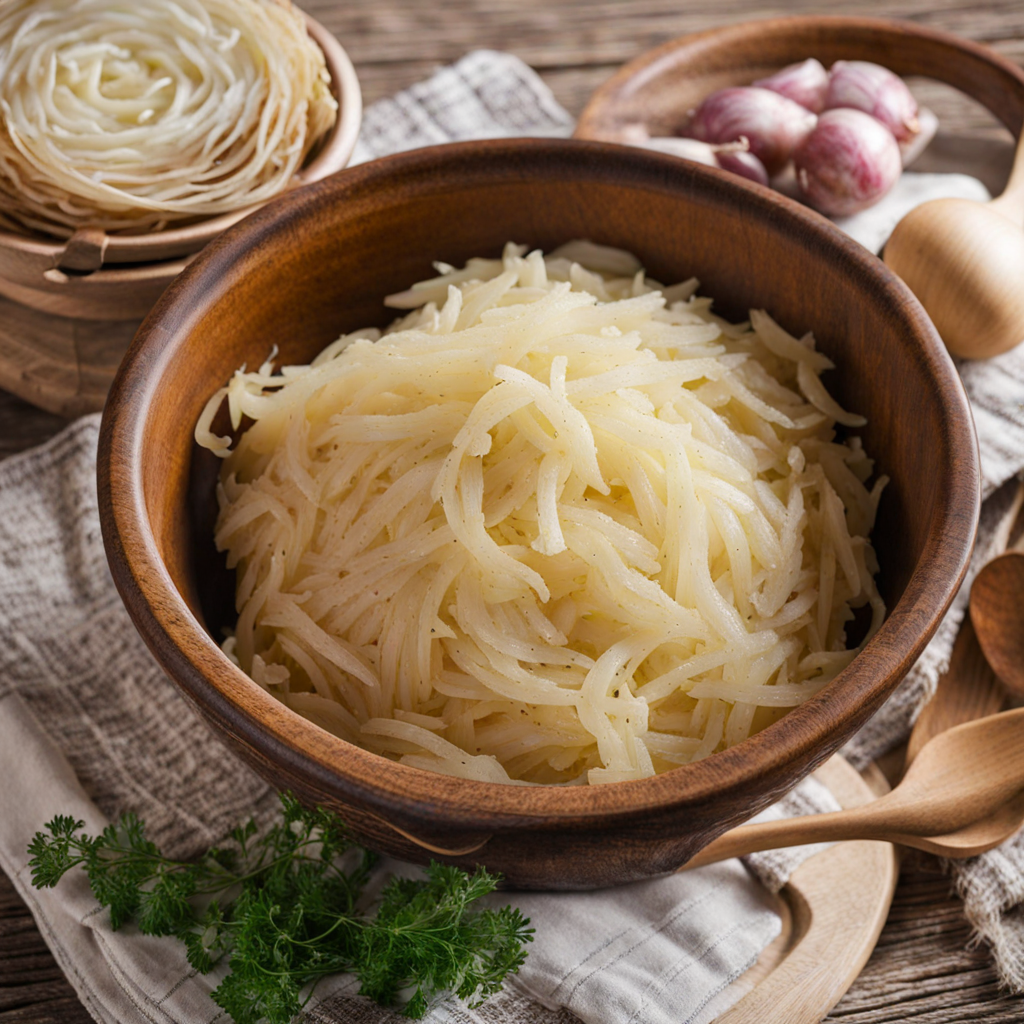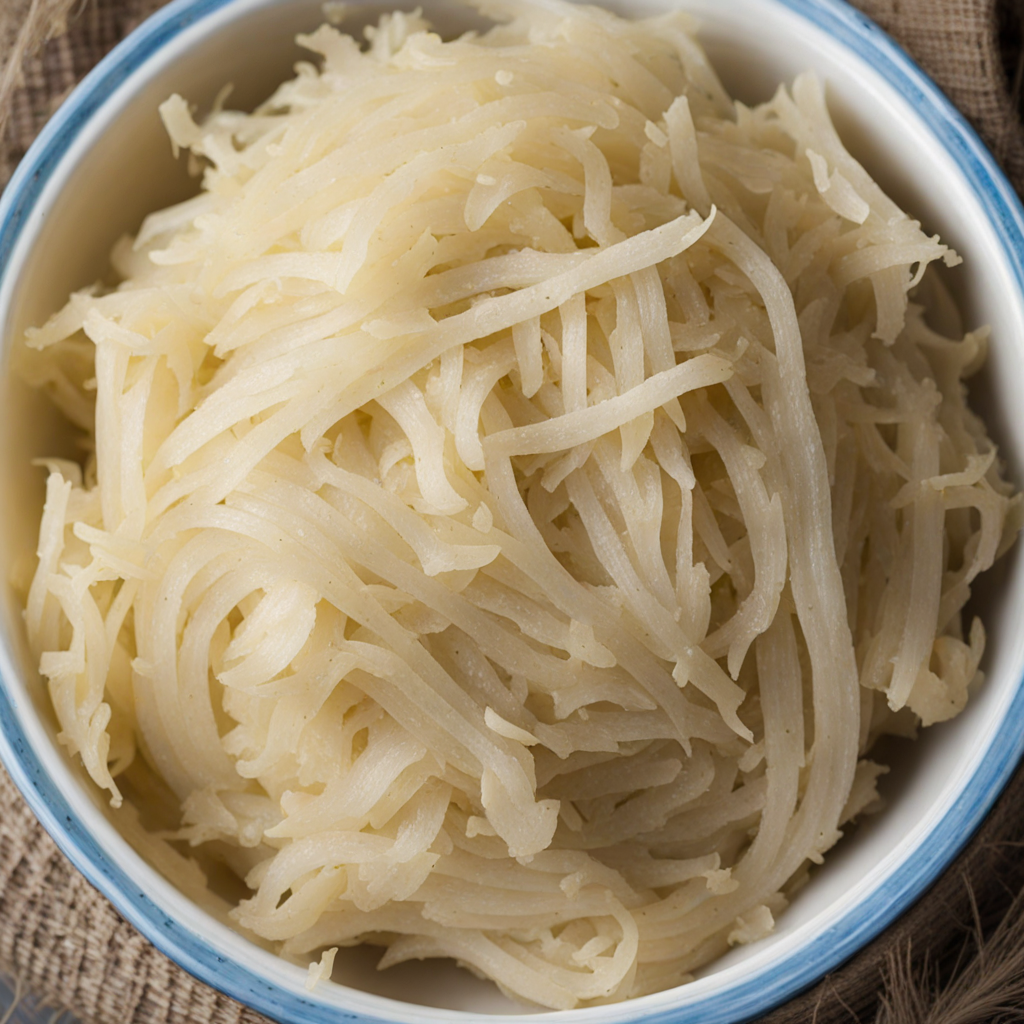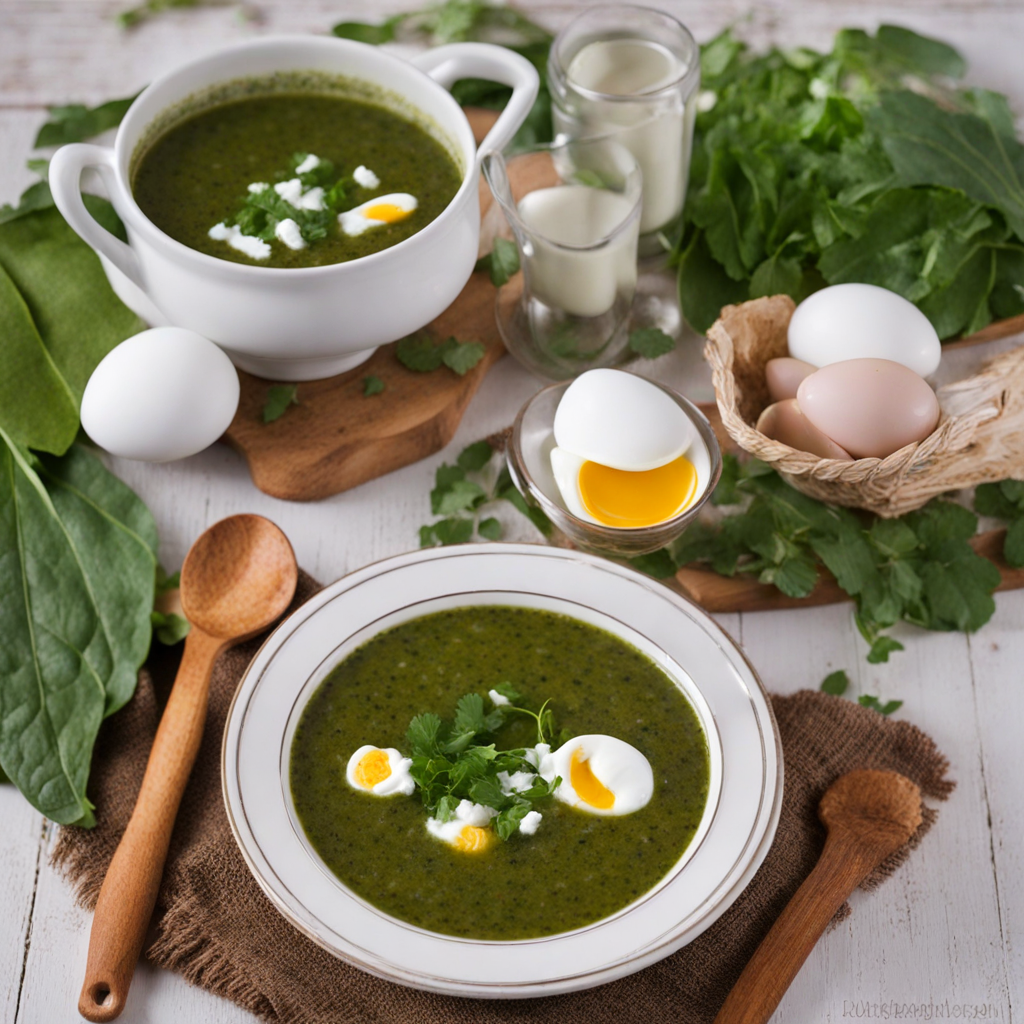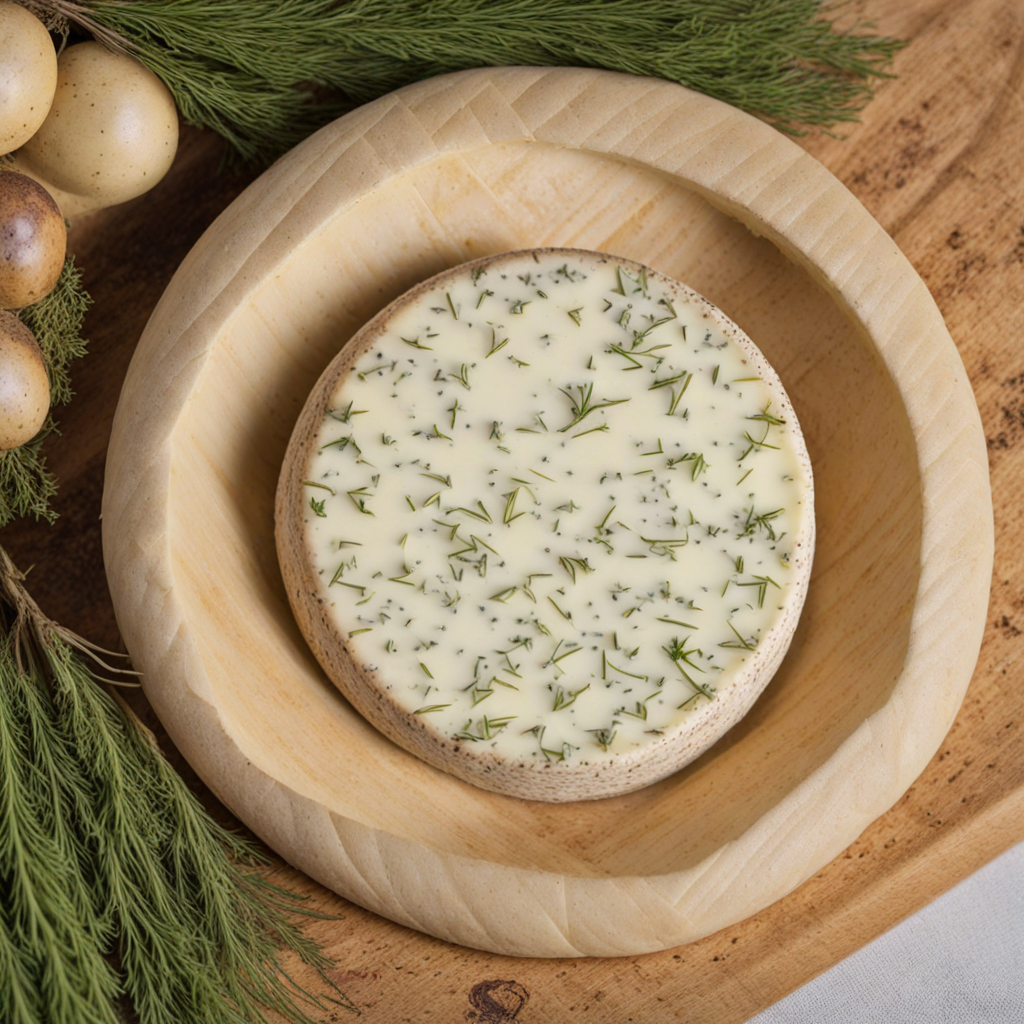Latvian Sauerkraut
Latvian Sauerkraut, known locally as 'skābēti kāposti', is a traditional dish that embodies the essence of Latvian cuisine. This fermented cabbage dish is often made with finely shredded white cabbage, which is tightly packed and allowed to ferment in its own juices. The fermentation process, lasting several weeks, not only preserves the cabbage but also enhances its flavor, giving it a distinctive tangy taste that is both refreshing and complex. The use of caraway seeds, which are frequently added during fermentation, contributes a warm, slightly nutty aroma that complements the natural sourness of the cabbage, creating a delightful balance of flavors. The texture of Latvian Sauerkraut is another notable aspect. The cabbage retains a satisfying crunch, even after the fermentation process, offering a pleasing contrast to the soft, cooked dishes it often accompanies. This dish is versatile and can be served warm or cold, making it a popular side for hearty meals. It pairs wonderfully with various types of meat, especially pork, as well as potatoes and sausages, enhancing the overall dining experience by providing a bright acidity that cuts through rich flavors. Beyond its taste and texture, Latvian Sauerkraut is steeped in cultural significance. It is commonly featured in traditional festivities and family gatherings, symbolizing home-cooked comfort food. The dish not only showcases Latvia's agricultural bounty but also reflects the importance of preservation techniques that have been passed down through generations. Enjoying Latvian Sauerkraut is not just about savoring a meal; it’s about experiencing a piece of Latvia's culinary heritage, making it a must-try for anyone looking to explore new and exciting tastes.
How It Became This Dish
Origin of Skābēti kāposti Skābēti kāposti, or fermented cabbage, is a traditional Latvian dish that embodies the culinary heritage of Latvia and the broader Baltic region. The origins of this fermented delicacy can be traced back to ancient agricultural practices in Europe, where various forms of vegetable fermentation were developed as a means of preserving food. Cabbage, a hardy vegetable that can withstand harsh winters, became a staple in the diets of many Eastern European cultures, including the Latvians. Historically, the process of fermentation was essential for food preservation before the advent of modern refrigeration. In Latvia, the cold climate and long winters necessitated the storage of food that could last through the seasons. Fermenting cabbage not only extended its shelf life but also transformed its flavor profile, giving rise to the tangy taste that characterizes skābēti kāposti today. The method of preservation allowed families to store nutrients and create hearty meals during times when fresh produce was scarce. \n\n Cultural Significance Skābēti kāposti holds a special place in Latvian culture, serving as a symbol of resilience and resourcefulness. It is not merely a side dish; it often plays a central role in traditional Latvian celebrations and gatherings. The dish is especially prominent during winter festivities, including Christmas and New Year's Eve, where it is commonly served alongside other traditional foods. In Latvian folklore, fermented cabbage is also associated with health and vitality, believed to provide essential vitamins during the cold months. Moreover, skābēti kāposti is emblematic of the Latvian connection to the land and seasonal cycles. It is often prepared at home using family recipes, passed down through generations, and reflects the strong cultural emphasis on community and sharing. This dish is also a testament to Latvia's agricultural heritage, as local farmers often grow their own cabbage specifically for fermentation. The process itself is communal, with families and friends coming together to prepare large batches, reinforcing social bonds and communal ties. \n\n Development Over Time The preparation of skābēti kāposti has evolved over the centuries, influenced by both local practices and broader culinary trends. While the basic method of fermentation has remained consistent—shredding cabbage, mixing it with salt, and allowing it to ferment in its own juices—various regional adaptations have emerged. In some areas, additional ingredients like carrots, spices, or even apples are included to enhance flavor, creating unique variations that reflect local tastes. The 20th century brought significant changes to Latvia’s culinary landscape, particularly with the influence of Soviet-era policies. During this time, traditional foods, including skābēti kāposti, were often produced on a larger scale to meet the demands of collective farms and state-run food systems. This led to a standardization of the dish, with less emphasis on family recipes. However, the end of the Soviet era in the early 1990s allowed for a revival of traditional cooking practices, as people sought to reconnect with their cultural roots. In contemporary Latvia, skābēti kāposti has regained its status as a beloved dish, celebrated for both its flavor and health benefits. The rise of the slow food movement and a growing interest in local and organic produce have prompted many Latvians to return to traditional methods of food preparation. Home fermentation is now experiencing a resurgence, with many people experimenting with different flavors and techniques, as well as incorporating modern culinary influences into this age-old dish. \n\n Skābēti kāposti in Modern Cuisine In modern Latvian cuisine, skābēti kāposti is often served as a side dish or as an ingredient in various recipes. Its tangy flavor complements traditional meals, such as speķa pīrādziņi (bacon pies) and various meat dishes. Additionally, it can be used in salads, soups, and even as a topping for sandwiches, showcasing its versatility in contemporary culinary applications. The dish has also found a place in the global food scene, as interest in fermentation and probiotic-rich foods has surged. Health enthusiasts appreciate skābēti kāposti for its digestive benefits, as the fermentation process creates beneficial bacteria. This has led to an increased demand for artisanal versions of the dish, both in Latvia and abroad, where it is often featured in specialty food shops and restaurants that celebrate traditional Eastern European cuisine. Furthermore, skābēti kāposti is now being embraced by chefs and food lovers beyond Latvia’s borders, leading to a greater appreciation of Latvian culinary traditions. Food festivals, culinary tours, and even cooking classes focusing on traditional Latvian foods often highlight skābēti kāposti, allowing new audiences to experience this unique aspect of Latvian culture. \n\n Conclusion Skābēti kāposti is more than just a fermented vegetable dish; it is a reflection of Latvia's agricultural history, cultural identity, and communal values. As it continues to evolve and adapt to modern tastes, this traditional food remains a cherished part of Latvian cuisine, serving as a delicious reminder of the past while embracing the future. Whether enjoyed at family gatherings, festive occasions, or as part of a contemporary meal, skābēti kāposti stands as a testament to the enduring legacy of Latvian culinary traditions.
You may like
Discover local flavors from Latvia







